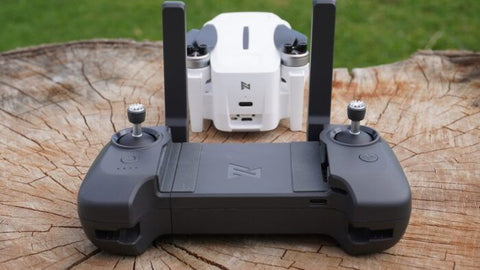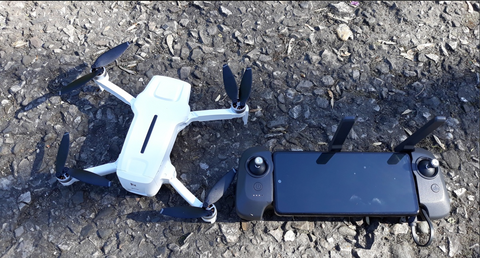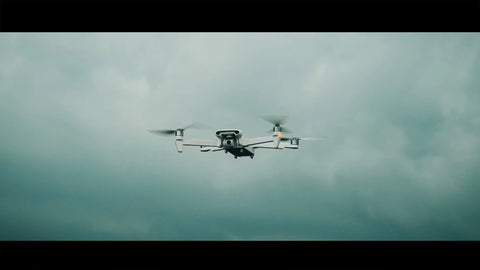
How to Fly a Drone: Beginner’s Guide
Share
You’ve picked up a drone, congratulations! You have taken the first step into a fun new world. A limitless world with new perspectives and freedoms that come with being un-tethered by gravity, free to travel the skies any way that you chose. Drones can be fun to fly as a hobby, or perhaps you want to create inspiring aerial photography. While this can be a little intimidating at first, with a few simple steps you can take to the skies and master your aerial platform in a safe and controlled way. Today we’ll take a look at some of the important steps and elements that come with flying a drone.

1. How Well Do You Know Your Drone?
Before going airborne, take a few minutes to become familiar with your drone. Learn about the controls, settings, and discover key information about the battery performance. It’s also a good idea to do some research about air traffic and drone rules in your area. To unleash your creativity safely and responsibly, please check out the latest tips, links, and instructional videos.
Even if you have never flown a drone before, you can become a master in a short amount of time with some practice. Many drones offer beginner modes and simulators that allow you to get used to the controls and fly in a safe way, without putting your drone or anyone else in harm’s way. Many of the drones in the FIMI connects the controller to your phone or tablet and a beginner mode that restricts the drone altitude and speed. These two modes provide a great opportunity for novice pilots to build their confidence before embarking on a full-fledged flight.
2. Drone Controls
Many drones on the market use a standard controller layout, consisting of control sticks and buttons. While the appearance of some controllers can differ in shape and size, the fundamental controls are the same. For the sake of simplicity, today we’ll talk about the modes commonly found on consumer drones like the FIMI X8 MINI.
Pushing the left joystick up causes the drone to fly up while pushing the joystick down causes the drone to descend. Alternatively, pushing this joystick to the left and right rotates the drone to the left and right, respectively.

The right stick controls the drone’s heading or movement. Pushing the right joystick up, down, left, and right causes the drone to move forward, backward, left, and right, respectively.
You will most likely also have several buttons that allow you to control the camera. These controls can take photos, record video, tilt or pan the camera, as well as give you access to menus. It can help to learn what each button does before flying.

The drone control layout is quite intuitive and easy to operate. Just be sure to remember which side of the drone is the front, so that you can remember which way is forward and backward. For added safety, keep your drone in GPS mode while flying; so that it hovers and maintains its position if the input to the control sticks is ceased.
3. Where Can You Practice Flying?
Once you’ve mastered the controls and you’re ready to take to the skies, the next important step is to study your surroundings. When you arrive at a new location, always take a minute to observe the terrain around you. This is done so that there are no surprises when you take off and are in the air. Take note of where buildings, trees, and power lines are so that you can safely fly your drone. Always be sure to check where local airports and heliports are; for safety reasons, you don’t want to fly close to them. Discover local flying rules and regulations to help you fly with peace of mind.

Before every flight, pay attention to the terrain and prepare for different weather conditions; wind, rain, and temperature can significantly affect flight performance. It is a good plan to postpone your flight if it looks like rain might be on the horizon. Not only can the rainwater affect electronic equipment, but it also can hinder visibility and transmission signals. Much like the rain, wind and temperature can also affect your flight, including, how much battery time you have to work with. Always keep an eye on your drone’s battery levels so that you have enough time to return and land.
4. Pre-Flight Checklist
Check the physical condition of the drone. Look for signs of wear, or cracks in the propellers;
Check the rules and regulations for the area you plan to fly in;
Check that your batteries are charged and have adequate power for flight;
Check that your controller and drone are properly connected;
Pay attention to the weather conditions;
Check that the immediate area around your drone to determine if it’s clear to take off and land;
Check your camera settings. Being able to see what your drone sees makes for safer flight;
Be sure there’s a memory card in your drone if you plan to take pictures or video;
Announce to anyone close to the drone that you are about to take off;
Monitor the drone settings as you fly.
Once you’re comfortable with the controls and how your drone operates, just remember that practice makes perfect! You can get out there, have fun, and get creative. There’s a whole new world waiting for you.

5. Helpful Flying Tips
Always keep spare batteries with you. To keep your drone flying for long periods of time, have some spares!
Keep a landing pad with you. This one might seem a little obvious, but it can become the make or break element in some scenarios. A folding landing pad, a piece of wood, or even a rolled-up carpet can help you take off in long grass, snow, or even dusty conditions.
Study maps! Look at satellite maps to find new areas to fly. If you’re looking for wide-open areas, or fun and interesting landmarks to shoot, all it takes is a little research to find great new spots.
Have fun, but be respectful! Drones are a lot of fun, but you must keep a safe distance from people, cars, and houses.
Keep your drone in a hard case or protective bag. Your drone is an investment, keep it protected during transportation. A case also enables you to keep your batteries and chargers with you at all times.
Use your drone to extend your range when you go on adventures and explore. Travel with it, hike with it, explore with it. You can use a drone to discover amazing new perspectives and angles. Have fun and get creative!
